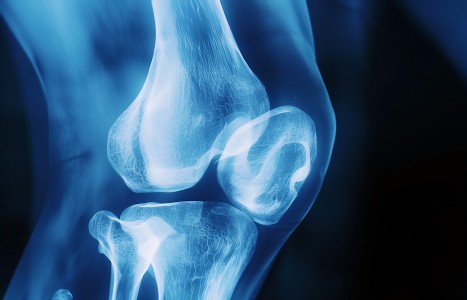While there may be no “magic bullet” when it comes to health, this should not dissuade patients or practitioners from seeking out ingredients that offer multiple health benefits. When it comes to dietary supplements, there are thousands upon thousands of choices. So, why not choose one that can address pain and assist with mental health? A supplement that can address inflammation, while also preventing certain types of cancer.
| Digital ExclusiveThe Subluxation, the Adjustment and Cerebrospinal Fluid Dynamics: Time for a Fresh Look
Chiropractors and other health professionals use spinal adjustments or spinal manipulation to assist patients with a variety of health complaints. There is now high-quality clinical research that supports manipulation as one option in the management of musculoskeletal disorders such as low back pain, neck pain and cervicogenic headache.1-5
Among chiropractors, clinical decision-making, including the decision to manipulate the spine, is based on certain fundamental theories. These theories include the hypothesis that displacement of a vertebra, particularly an upper cervical vertebra, may result in unusual stress being placed upon the spinal cord, leading to interference with normal spinal cord function,6-7 and that this results in the development of signs and symptoms. The hypothesized stressors include direct pressure of bone on nervous tissue, the interactions between the spinal cord and tissues that anchor the spinal cord within the vertebral canal, and alterations in cerebrospinal fluid dynamics.8-9
The latter theory proposes that subluxation may impair the normal circulation of cerebrospinal fluid,10 thereby interfering with function of the spinal cord. Some practitioners also claim that there is an intrinsic oscillation in cerebrospinal fluid pressure, and that this oscillation is palpable through the human cranium and altered in disease states.
If any of the components of this hypothesis were to prove correct, practitioners might have at hand (forgive me) useful tools for the diagnosis and treatment of conditions affecting the central nervous system. It is therefore worthwhile to examine some of the suppositions underlying theories related to CSF pressure and spinal subluxation.
In this paper, we want to consider three questions:
- Does CSF pressure actually oscillate?
- Is CSF pressure or pressure oscillation palpable?
- Could vertebral displacement affect CSF pressure?
It is certainly clear that CSF pressure oscillates in a rhythmic fashion, and this is reflected in the movements of the cranial sutures. Particularly during surgery, when patients or experimental animals receive positive-pressure ventilation, the sutures can be seen to open and close in concert with respiration. By way of example, in rats, Kusaka, et al., previously reported oscillations in CSF pressure that they took to be synchronous with respiration.11 However, no numerical data were reported and there was no attempt to search for oscillation frequencies. Cerebral CSF pressure oscillations, apparently entrained to the cardiac and respiratory rhythms, have also been reported in dogs12 and cats.13 In rats,11 cats13-14 and rabbits,15 it has been reported that CSF and intracranial pressure normally average less than 10mmHg and oscillate over a range of approximately 2 mmHg, apparently in concert with blood pressure and respiration. Hence, lower frequency oscillations of less than a few mmHg would be difficult to detect reliably.
In humans, in addition to cardiac and respiratory entrainment, very low-frequency oscillations, the B waves or Lundberg waves, have also been described. However, these waves have particularly been sought, and therefore found, in patients with intracranial pathology, and have been associated with low-frequency oscillations in the respiratory rate16-17 (for example, in Cheyne-Stokes breathing). Nonetheless, these waves have also been described in artificially ventilated patients and in well volunteers.18 Episodic slow waves similar to human B waves have also been reported in the H-Tx strain of rat, which displays spontaneously developing hydrocephalus,19 and this reinforces the association with pathology.
It seems most reasonable that paced respiration, as in the surgical patient, would entrain CSF pressure oscillations to the respiratory rate, and therefore tend to obscure lower frequency oscillations. Hence, experimental evidence of rhythmic variations in CSF pressure, other than those accompanying the cardiac and respiratory cycles, would not normally be expected in otherwise physiological preparations. Thus, in humans and other animals, although low-frequency oscillations in blood pressure, sometimes called Mayer waves, have been attributed to, among other mechanisms, an intrinsic rhythm in sympathetic output,20 which has a duration in the order of 10 seconds, similar oscillations have not been documented in CSF pressure. Only so-called B waves in CSF pressure, with wavelengths of 0.5 to 2 minutes, have been described and attributed to pathological oscillations in the respiratory rhythm.16
Kusaka, et al.,11 reported that, in rats, following intracranial subarachnoid hemorrhage, there were acute increases in CSF pressure of up to approximately 100 mmHg, lasting for several seconds. Thereafter, CSF pressure fell, but over a period of hours, underwent oscillations of up to approximately 30 mmHg. Similar patterns have been reported in human patients following intracranial injury or failure of CSF shunts. Large-amplitude, low-frequency oscillations have only been reported as an occasional finding in well subjects. On the other hand, considering the risks and benefits involved, one would not expect a large volume of such research in subjects without frank disease, and there are no reports of CSF pressure monitoring in patients with vertebral (or cranial) subluxation.
In conscious human subjects, lower frequency oscillations within the range of several seconds to minutes would be more likely to express themselves when the subjects are breathing spontaneously and without pacing. Hence, investigations in well subjects, rather than surgical patients, might well reveal additional patterns to CSF fluid dynamics.
Thus, we can say with certainty that oscillations in CSF pressure are a normal finding and are driven in part by cardiovascular and respiratory rhythms. These pressure waves are most often of low amplitude. High-amplitude waves are most often reported in patients with intracranial disorders, but are an occasional finding in well subjects. Coincident oscillations in the cranial sutures are visible at surgery, but may not be representative of suture movement in normal, spontaneously ventilating subjects.
To move to our second question, is it reasonable to think that oscillations in CSF pressure can be palpated through the cranium? Based on numerous observations in experimental animals, and a few studies in well humans, it appears that short-term oscillations in CSF pressure range over no more than a few mmHg. Furthermore, it appears that oscillations of a few 10s of mmHg are seldom described in the absence of very frank intracranial disease. By way of comparison, peripheral arterial pulses also range over a few 10s of mmHg, and of course, respiratory oscillations are substantially lower. Nonetheless, ventilatory movements are still palpable. Hence, one is probably approaching the limits of manual sensitivity in attempting to palpate cranial suture movements. This suggests that the proposition is neither "a given" nor outrageous; rather, it is an intriguing hypothesis worth challenging rigorously.
Finally, let us ask whether it is reasonable to think that displacement or adjustment of a vertebra could alter CSF pressure. Acute or chronic displacement of a vertebra will almost certainly produce at least a transient change in the volume of the space enclosed by the cranial and spinal meninges. In a completely closed system, this volume change would necessarily result in a pressure change which could be detected by sufficiently sensitive technology. Furthermore, the pressure change should be transmitted throughout the neuraxis. In this regard, Thalen, et al.,21 reported that a 1-second-duration, 30 cm H20 pulse applied to the cranial dura mater of the guinea pig was transmitted to the cochlear perilymph virtually instantaneously. Presumably, the pressure wave would also have been transmitted to the most distal reaches of the subarachnoid space. We are therefore inclined to assume that displacement of a vertebra, at whatever velocity, might result in widespread changes in CSF pressure. The technology is available to directly challenge this hypothesis in animals or humans.
Having said that, the movement of a single vertebra, within physiological limits, would be expected to cause only a minor alteration in the volume, and thus the pressure, of the neuraxis. This is because, compared to the total volume of the neuraxis, subluxation would produce such a small volume change. Furthermore, in the living system, each of the tissues surrounding the brain and spinal cord will have some capacity to deform, and therefore will buffer changes in pressure due to changes in CSF volume. Similarly, a degree of buffering will occur by fluid exchange with the general circulation.13 With these considerations in mind, we are not encouraged to think that displacement of a single vertebra is likely to produce significant or sustained alteration in CSF pressure via exclusively biomechanical mechanisms.
This is not to say that manipulation could not produce an instantaneous pulse wave which might have physiological effects. This is certainly worth investigation. Furthermore, we have previously observed in anesthetized animals (manuscript in preparation) and conscious humans22 that cervical manipulation is associated with acute changes in blood pressure. In animal models, acute hypertension and hypotension are association with changes in CSF pressure.12,14 Hence, cervical manipulation could result in secondary changes in CSF pressure in the absence of a direct mechanical effect of vertebral movement on CSF within the vertebral canal.
Hypotheses concerning subluxation, adjustment and cerebrospinal fluid dynamics do not enjoy much vogue these days. Nonetheless, they are grounded in reasonably sound principles of anatomy and physiology, and deserve to be challenged rigorously. Regardless of whether one is particularly attracted to one hypothesis or another, we have to admit that there is still no robust theory to explain the observed physiological effects of subluxation and adjustment. Theories related to CSF fluid dynamics are worth investigating and could be pursued with currently available technology.
References
- Evans R, Bronfort B, Nelson B, Goldsmith CH. Two-year follow-up of a randomized clinical trial of spinal manipulation and two types of exercise for patients with chronic neck pain. Spine 2002;27(21):2383-9.
- Giles L, Muller R. A randomized clinical trial comparing medication, acupuncture, and spinal manipulation. Spine 2003;28(14):1490-1503.
- Korthals-de Bos IBC, Hoving JL, van Tulder MW, et al. Cost effectiveness of physiotherapy, manual therapy, and general practitioner care for neck pain: economic evaluation alongside a randomised controlled trial. British Medical Journal 2003:911.
- Childs JD, Fritz JM, Flynn TW, et al. A clinical prediction rule to identify patients with low back pain most likely to benefit from spinal manipulation: a validation study. Ann Intern Med 2004;141:920-928.
- United Kingdom Back Pain Exercise and Manipulation (UK BEAM) randomised trial: cost effectiveness of physical treatments for back pain in primary care. BMJ, Dec. 11, 2004; 329:1381.
- Richards DM. The Palmer philosophy of chiropractic - an historical perspective. Chiropr J Aust 1991;21(2):63-8.
- Bolton SP. The "wet specimen." Chiropr J Aust 1994;24(4):147-50.
- Harrison DE, Cailliet R, Harrison DD, et al. A review of the biomechanics of the central nervous system - part II: spinal cord strains from postural loads. J Manipulative Physiol Ther 1999;22(5):322-32.
- Harrison DE, Cailliet R, Harrison DD, et al. A review of biomechanics of the central nervous system - part III: spinal cord stresses from postural loads and their neurologic effects. J Manipulative Physiol Ther 1999;22(6):399-410.
- Pederick FO. Cranial adjusting - an overview. Chiropr J Aust 1993;23(3):106-12.
- Kusaka G, Calvert JW, Smelley C, et al. New lumbar method for monitoring cerebrospinal fluid pressure in rats. J Neuroscience Methods 2004;135:121-7.
- Hamer J, Alberti E, Hoyer S, Wiedemann K. Influence of systemic and cerebral vascular factors on the cerebrospinal fluid pulse waves. J Neurosurg 1977;46:36-45.
- Shapiro K, Fried A, Takei F, Kohn I. Effect of the skull and dura on neural axis pressure-volume relationships and CSF hydrodynamics. J Neurosurg 1985;63:76-81.
- Miller JD, Pattisapu J, Peeler DF, Parent AD. Intracranial pressure monitoring by flaccid-cuff catheter in an animal model. J Neurosurg 1985;63:242-245.
- Gyring JA, Brondsted HE. Repetitive measurements of intracranial pressure in awake rabbits. Acta Physiol Scand 1984;(122):299-305.
- Steinmeier R, Bauhuf C, Hubner U, et al. Slow rhythmic oscillations of blood pressure, intracranial pressure, microcirculation, and cerebral oxygenation. Stroke 1996;27:2236-2243.
- Lescot T, Naccache L, Bonnet MP, et al. The relationship of intracranial pressure Lundberg waves to electroencephalograph fluctuations in patients with severe head trauma. Acta Neurochir 2005;147:125-129.
- Friese S, Hamhaber U, Erb M, Klose U. B-waves in cerebral and spinal cerebrospinal fluid pulsation; measurement by magnetic resonance imaging. J Comput Assist Tomogr 2004;28(2):255-262.
- Kaiser G, Jones HC. Cerebrospinal fluid pressure in 10-day-old rats with congenital hydrocephalus. Eur J Pediatr Surg 1991;Suppl 1:20-2.
- Montano N, Cogliati C, da Silva VJD, et al. Sympathetic rhythms and cardiovascular oscillations. Autonomic Neuroscience: Basic and Clinical 2001;90:29-34.
- Thalen EO, Wit HP, Segenhout JM, Albers FWJ. Dynamics of inner ear pressure change caused by intracranial pressure manipulation in the guinea pig. Acta Otolaryngol 2001;121:470-476.
- Budgell B, Hirano R. Innocuous mechanical stimulation of the neck and alterations in heart rate variability in healthy young adults. Autonomic Neuroscience: Basic and Clinical 2001;91:96-99.
Brian Budgell, DC
School of Health Sciences,
Faculty of Medicine
Kyoto University
Kyoto, Japan


